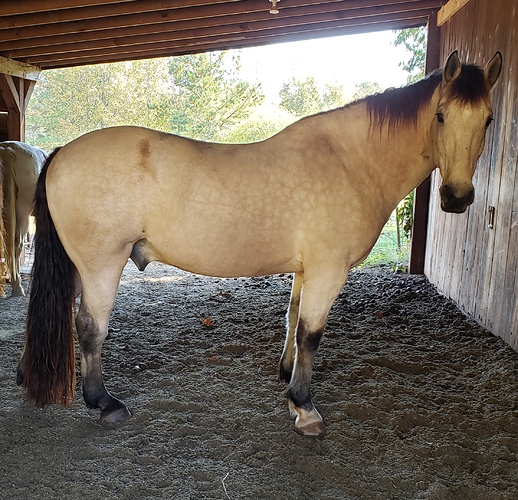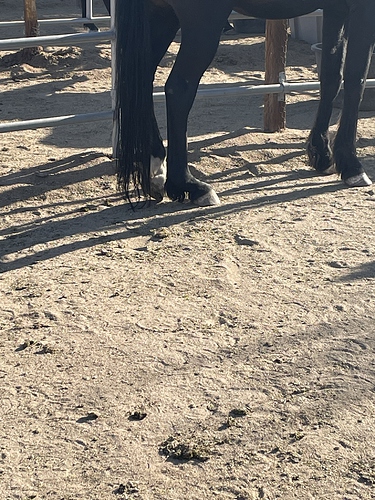Good morning,
I hope it’s ok to start a whole new topic on DSLD.
I am in a struggle with this disease (in 2 imported young horses) and ended up on COTH last night looking for others’ experiences and I wanted to add this recent study from University of Wisconsin School of Veterinary Medicine
published July 2022:
https://academic.oup.com/g3journal/article/12/10/jkac179/6648349
Notes from one of the researchers:
When diagnosing DSLD, visually, it’s possible for DSLD to be developed in all four limbs. It usually presents bilaterally, meaning both front, both hind, or all four legs are affected. However, both the dropping and swelling of the fetlocks can be a sign of other suspensory problems other than DSLD. Therefore, the only way to confirm whether or not a horse has developed DSLD is through ultrasounds performed by a large animal veterinarian. In case you are curious, I have attached the instructions that we send to veterinarians.
In regards to the expansion of testing, we are now looking into other high-risk breeds breeds with particularly high risk of DSLD including the Paso Fino, Warmbloods, and Akhal-Teke breeds amongst others. We hope to use our knowledge from the research of Peruvian horses to help us.
Ultrasound examination instructions of the suspensory ligament-2022 FINAL.pdf (928.5 KB)
As you can see, the biopsy of the nuchal ligament is no longer considered reliable. The definitive test is still upon necropsy. I have two horses stricken by this disease by the age of 6 (the first was diagnosed after three year struggle with symptoms that didn’t add up, the 2nd was apparent to the vet within a couple months (he is 6). One is a Trakehner from Canada, the other is a GRP (German Riding Pony) from The Netherlands.
I look for studies accepting hair bulb (or other nonlethal) samples so that I may at least contribute something to the research of this disease as it relates to breeds and inheritability. I am looking forward to the day when they have a genetic test for other breeds as they already have for the Peruvian Paso Finos. I am paralyzed when it comes to horse shopping! I want to buy young because I can’t afford a made horse. But the symptoms don’t show up until you put them in real work.




